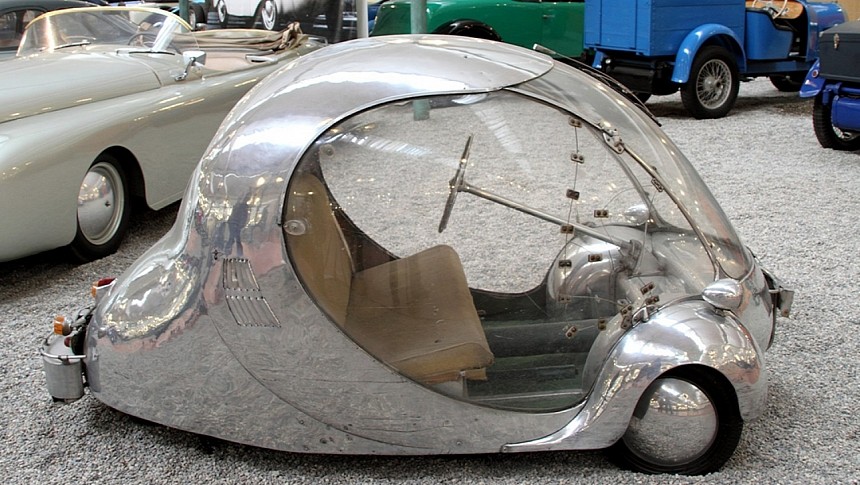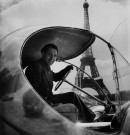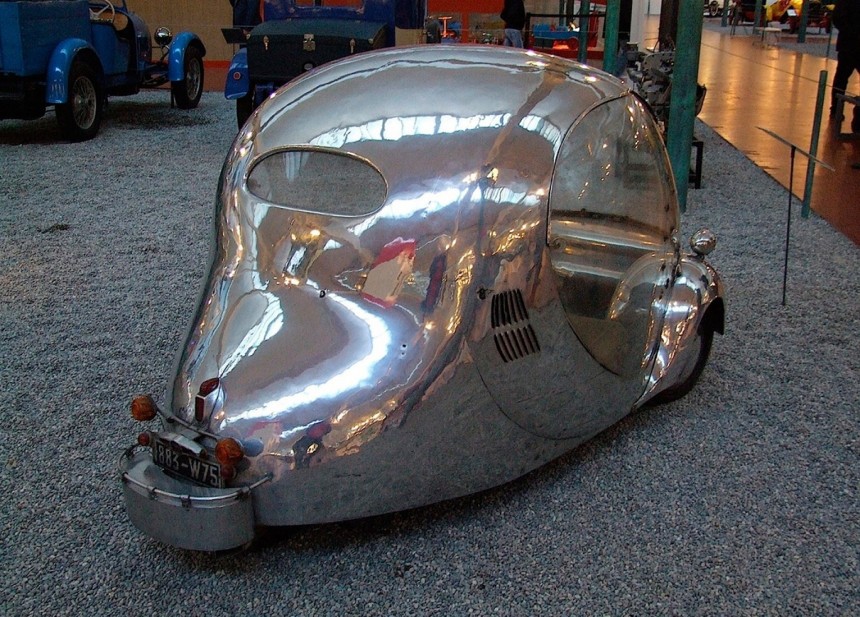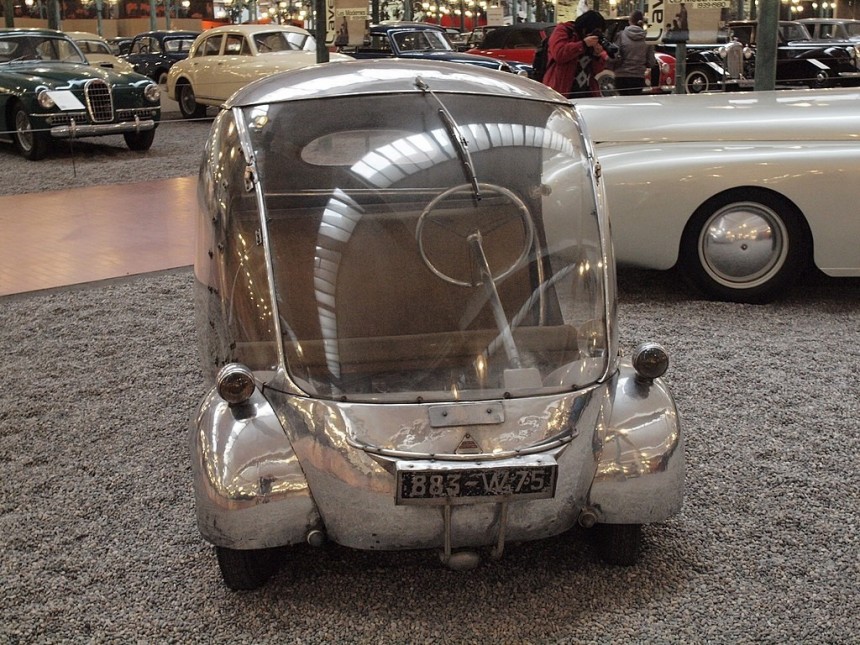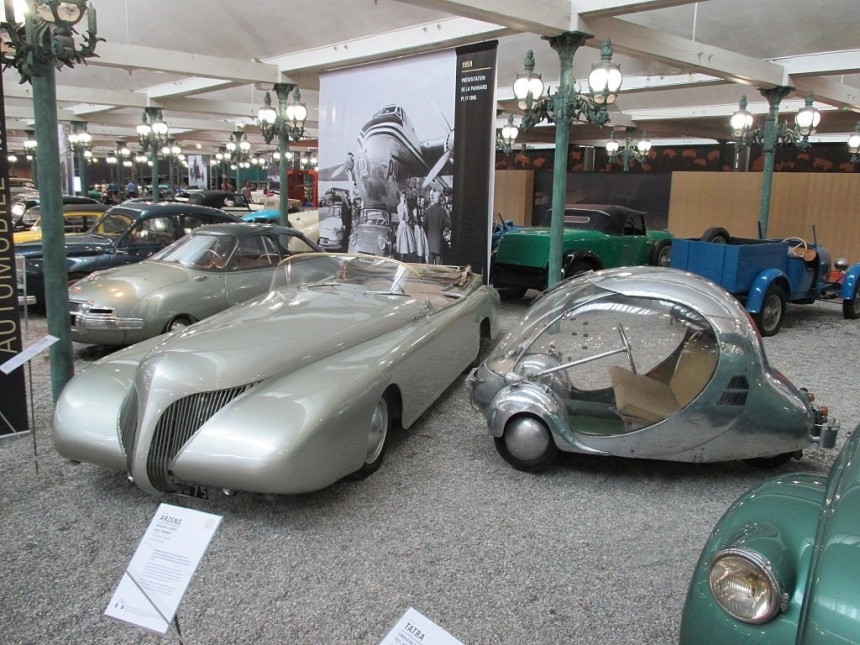Since the dawn of the automobile, engineers and car designers have come up with an immense variety of unique car designs that have made waves across the industry. But they say there is nothing new under the sun and what has been will be again, and this is also true for the automotive world. We might be currently witnessing a boom in electric vehicles, but the technology has been around for decades.
Nowadays, there seems to be a consensus that the automotive future is electric, with battery-powered vehicles slowly replacing internal combustion engines, but EVs existed long before Tesla. The very first electric cars actually predate gasoline-powered autos, and the automotive history includes some innovative takes and even failed attempts on electrified vehicles.
One vehicle that had something to tell the world about the car of the future, demonstrating the incredible potential of automotive design and engineering, was L'Oeuf Electrique, which is French for the Electric Egg. That's a weird name for a car, but a fitting one nonetheless, considering its peculiar shape.
Designed in 1942 by Paul Arzens, the Electric Egg provides us with a glimpse into a world where anything can be envisioned and brought to life, no matter how outlandish and unconventional it may appear at first glance.
Multi-disciplined industrial designer Paul Arzens was born in 1903 in Paris and initially pursued a career as an artist, having studied at the Ecole des Beaux-Arts. Later on, in the 1940s and '50s, he became interested in engineering and design and built a reputation as a talented designer of locomotives and cars. He designed most of the diesel and electric locomotives built for the French railway system (the SNCF) during the 1950s and also contributed to the TGV (Tres Grande Vitesse) late in the 1960s.
In 1942, he introduced the prototype of the L'Oeuf Electrique, a compact three-wheeled bubble car powered by electricity with an aluminum body and a plexiglass windshield.
A bit of historical context would help to better understand the designer's aim with this car. In the spring of 1940, German troops invaded and conquered France and moved on to occupy factories and seize most of the country's cars. Moreover, gasoline was in short supply. So Arzens wanted to develop an electric vehicle that could be used as a city car and reduce dependency on fossil fuels.
His solution is this minimalist egg-shaped two-seater electric vehicle that was often described as the wackiest car created in Europe during the 1940s. He used aluminum for the bodywork and a plexiglass bubble that surrounded the body, offering the driver and passenger great visibility as they moved along. The hand-formed aluminum body tapers at the rear to cover the third wheel and the electric motor.
It was all framed around a chassis made of Duralinox tubing, a stainless steel, aluminum, and magnesium alloy that offered increased resistance to corrosion. It featured suspension on the rear wheel for optimal handling.
The use of aluminum and plexiglass was way ahead of its time, and both materials were chosen to minimize weight. The body and the electric motor weighed only ninety kilograms (198 pounds). Electricity was provided via five 12-volt batteries that brought the minicar's weight up to 350 kg (772 pounds).
On the performance front, L'Oeuf Electrique was reportedly able to reach a top speed of 70 kph (44 mph), or 60 kph (37 mph) with two people on board. The five batteries endowed it with an autonomy of 100 kilometers (63 miles).
For the interior, Arzens went for the same minimalist approach. There is just a bench seat over a wicker frame and a steering wheel. No instrument panel or gauges in sight.
Though Arzens attracted quite a bit of attention with its eclectic electric car, the privations of the war in France prevented the electric car from catching on. Aluminum was a scarce and valuable material during those times when most of the available resources were used to make military equipment. As a result, only one prototype was ever built, which Arzens used as his personal transportation until his death in 1990.
When the war came to an end, the industrial designer replaced the electric motor powering the Egg with a 125 cc (7.6 cu-in) Peugeot single-cylinder gas engine. It delivered a modest 5.5 horsepower (4.1 kW), but it led nonetheless to an increase in the car's top speed to 80 kph (50 mph).
The L'Oeuf Electrique was not Arzens' first automotive project. In 1938, he built La Baleine (the Whale), another unique vehicle with a lengthy body inspired by aviation and a chassis borrowed from an American Buick Standard.
After Arzens' death, the L'Oeuf Electrique was donated to the Musée des Arts et Métiers in Paris. In 2022, this unique historic car found a new home at the Cité de l'Automobile in Mulhouse, together with La Baleine.
Though it never entered mass production, the L'Oeuf Electrique was a pioneer in the automotive world with its compact, lightweight design, electric motor, excellent visibility, and, last but not least, the fun factor. It laid the foundation for future city cars like the BMW Isetta, Mini, or Fiat 500.
One vehicle that had something to tell the world about the car of the future, demonstrating the incredible potential of automotive design and engineering, was L'Oeuf Electrique, which is French for the Electric Egg. That's a weird name for a car, but a fitting one nonetheless, considering its peculiar shape.
Designed in 1942 by Paul Arzens, the Electric Egg provides us with a glimpse into a world where anything can be envisioned and brought to life, no matter how outlandish and unconventional it may appear at first glance.
In 1942, he introduced the prototype of the L'Oeuf Electrique, a compact three-wheeled bubble car powered by electricity with an aluminum body and a plexiglass windshield.
A bit of historical context would help to better understand the designer's aim with this car. In the spring of 1940, German troops invaded and conquered France and moved on to occupy factories and seize most of the country's cars. Moreover, gasoline was in short supply. So Arzens wanted to develop an electric vehicle that could be used as a city car and reduce dependency on fossil fuels.
His solution is this minimalist egg-shaped two-seater electric vehicle that was often described as the wackiest car created in Europe during the 1940s. He used aluminum for the bodywork and a plexiglass bubble that surrounded the body, offering the driver and passenger great visibility as they moved along. The hand-formed aluminum body tapers at the rear to cover the third wheel and the electric motor.
It was all framed around a chassis made of Duralinox tubing, a stainless steel, aluminum, and magnesium alloy that offered increased resistance to corrosion. It featured suspension on the rear wheel for optimal handling.
On the performance front, L'Oeuf Electrique was reportedly able to reach a top speed of 70 kph (44 mph), or 60 kph (37 mph) with two people on board. The five batteries endowed it with an autonomy of 100 kilometers (63 miles).
For the interior, Arzens went for the same minimalist approach. There is just a bench seat over a wicker frame and a steering wheel. No instrument panel or gauges in sight.
Though Arzens attracted quite a bit of attention with its eclectic electric car, the privations of the war in France prevented the electric car from catching on. Aluminum was a scarce and valuable material during those times when most of the available resources were used to make military equipment. As a result, only one prototype was ever built, which Arzens used as his personal transportation until his death in 1990.
The L'Oeuf Electrique was not Arzens' first automotive project. In 1938, he built La Baleine (the Whale), another unique vehicle with a lengthy body inspired by aviation and a chassis borrowed from an American Buick Standard.
After Arzens' death, the L'Oeuf Electrique was donated to the Musée des Arts et Métiers in Paris. In 2022, this unique historic car found a new home at the Cité de l'Automobile in Mulhouse, together with La Baleine.
Though it never entered mass production, the L'Oeuf Electrique was a pioneer in the automotive world with its compact, lightweight design, electric motor, excellent visibility, and, last but not least, the fun factor. It laid the foundation for future city cars like the BMW Isetta, Mini, or Fiat 500.
